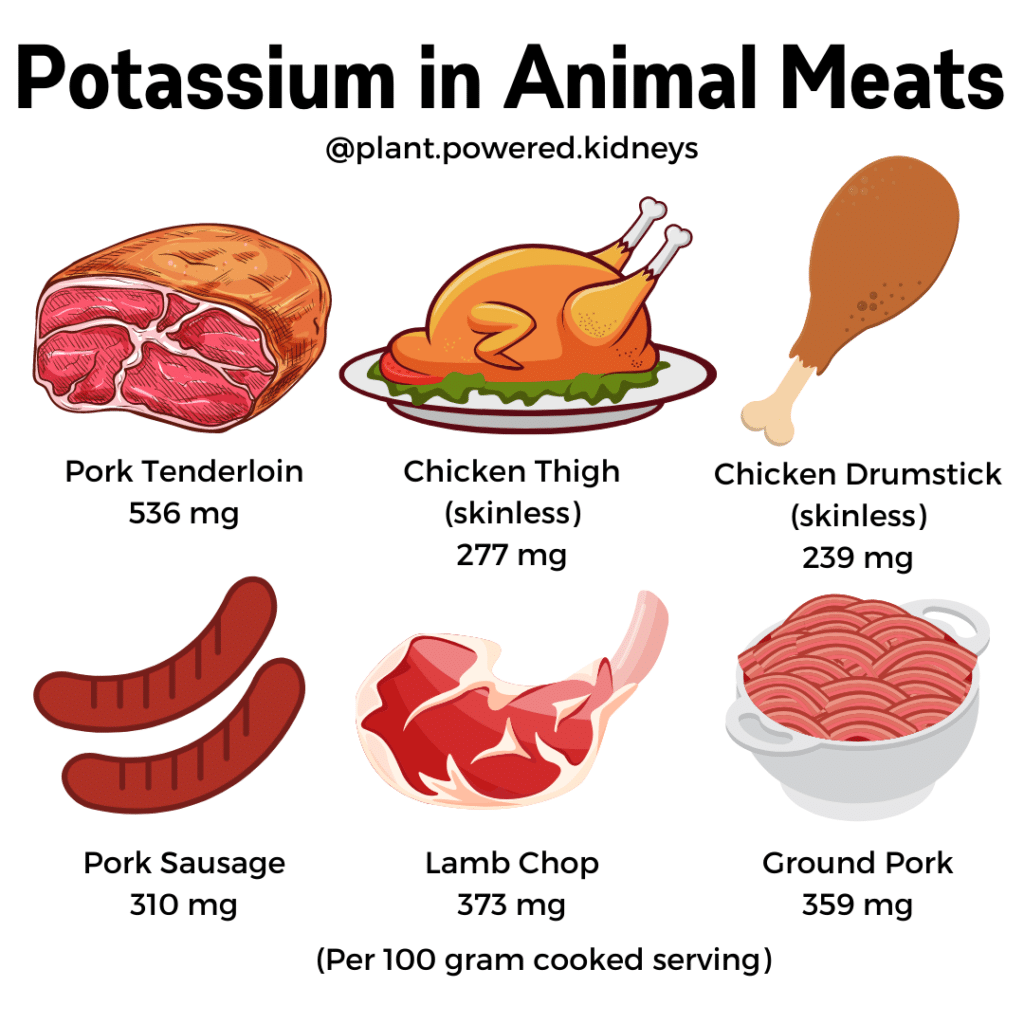A low potassium diet is essential for individualities with certain health conditions, particularly those dealing with order complaint, heart issues, or other medical enterprises that affect the body’s capability to reuse potassium effectively. Potassium is a vital mineral that plays a pivotal part in colorful fleshly functions, including maintaining normal heart meter, muscle function, and whim-whams signaling. still, for some people, too important potassium can be dangerous, leading to serious health complications similar as hyperkalemia, which is an elevated position of potassium in the blood.
In this composition, we will explore the significance of potassium in the body, why some people need to follow a low potassium diet, and how to manage and apply this salutary approach successfully. We’ll also give practical tips on choosing the right foods, avoiding high- potassium particulars, and creating balanced refections that align with the salutary restrictions.
The significance of Potassium in the Body
Potassium is one of the body’s crucial electrolytes, helping regulate fluid balance, whim-whams signals, and muscle condensation.Along with sodium, potassium plays an essential part in maintaining the proper balance of fluids outside and outside the cells. It’s also critical for maintaining normal heart function and blood pressure situations. A healthy grown-up should consume around 2,500 to 3,000 milligrams of potassium daily to meet the body’s conditions.
generally, the feathers help maintain the correct balance of potassium in the bloodstream by filtering redundant quantities out of the body through urine. still, when order function is bloodied, or other medical conditions intrude, potassium can accumulate to dangerous situations, which can beget hyperkalemia. Hyperkalemia can lead to symptoms like muscle weakness, fatigue, abnormal heart measures, or indeed cardiac arrest in severe cases.
Who Needs a Low Potassium Diet?
A low potassium diet is generally specified for individualities who have conditions that help their bodies from duly barring redundant potassium. Some common conditions that may bear this diet include
habitual order complaint( CKD) As order function declines, the feathers come less effective at filtering out potassium, leading to a implicit buildup in the bloodstream.
Heart Failure Cases with heart failure may need to follow a low potassium diet, especially if they’re on certain specifics, similar as ACE impediments or potassium- sparing diuretics, which can raise potassium situations.
Adrenal Gland diseases Conditions similar as Addison’s complaint can intrude with potassium regulation in the body.
Use of Certain specifics Some specifics can increase potassium situations, similar as certain blood pressure specifics,non-steroidalanti-inflammatory medicines( NSAIDs), or potassium supplements.
Dialysis Cases Those witnessing dialysis treatment may need to nearly cover potassium input since their feathers can not filter out redundant potassium effectively.
Understanding a Low Potassium Diet
A low potassium diet generally limits diurnal potassium input to around 2,000 milligrams, although specific quantities can vary depending on individual health requirements. The thing of this diet is to help the dangerous accumulation of potassium in the blood while still icing the existent gets enough nutrients from a balanced diet.
To achieve this, it’s pivotal to come familiar with foods that are high in potassium and those that are considered low in potassium. By avoiding or limiting high- potassium foods and choosing lower- potassium druthers , individualities can effectively manage their potassium situations.
Foods to Avoid or Limit on a Low Potassium Diet
numerous healthy foods are naturally high in potassium, and while they might be salutary for the general population, they can be problematic for those demanding to control potassium situations. Then are some high- potassium foods that should be avoided or eaten in small portions
Fruits Bananas, oranges, melons, avocados, dried fruits( raisins, apricots), and papayas are high in potassium.
Vegetables Potatoes, sweet potatoes, tomatoes, spinach, pumpkin, broccoli, and Brussels sprouts contain high situations of potassium.
Dairy Milk, yogurt, and rubbish can be rich sources of potassium.
Protein Flesh like beef, pork, and fish( especially salmon and tuna) can have moderate to high potassium content. Reused flesh may also contain added potassium in the form of preservatives.
Nuts and Seeds Almonds, pistachios, sunflower seeds, and peanut adulation are all high- potassium foods.
Legumes sap, lentils, and peas are also high in potassium.
Other Chocolate, molasses, and certain swab backups( which contain potassium chloride) should also be avoided.
Low Potassium Food Choices
On a low potassium diet, it’s important to concentrate on foods that are naturally lower in potassium while still furnishing the necessary nutrients to maintain a balanced diet.Below are some exemplifications of low- potassium foods that can be included in your refections
Fruits Apples, berries( blueberries, strawberries), grapes, pears, peaches, catches, and pineapple.
Vegetables Cabbage, cauliflower, cucumbers, green sap, carrots, and bell peppers. Boiling vegetables can help reduce their potassium content.
Grains White rice, pasta, couscous, and chuck are generally low in potassium.
Dairy Alternatives Rice milk(non-enriched) and almond milk(non-enriched) are lower in potassium compared to regular cow’s milk.
Protein Egg whites, funk, lemon, and tofu are good low- potassium protein sources.
Snacks and Sweets Unsalted popcorn, rice galettes, and eyefuls made without chocolate or molasses are suitable options for a low- potassium diet.
Cooking Tips for Reducing Potassium in Foods
One helpful fashion to reduce the potassium content in certain high- potassium vegetables is filtering. Filtering involves soaking or boiling vegetables in water to remove some of the potassium. Then’s how to do it
Peel and cut the vegetable into small pieces.
Soak the pieces in a large quantum of water for about two hours, changing the water halfway through.
Boil the vegetable in fresh water for 10 twinkles.
Drain and wash the vegetables before cooking them as asked .
Filtering is particularly useful for vegetables like potatoes, sweet potatoes, carrots, and squash, as it can help make these high- potassium foods more manageable in small amounts.
Monitoring Potassium Input
Managing a low potassium diet requires industriousness and careful monitoring of food choices. It’s important to check food markers for potassium content, especially in reused orpre-packaged foods. numerous convenience foods, gravies, and snacks may have added potassium that could contribute to your diurnal input.
Working with a healthcare professional, similar as a dietitian, can be inestimable when following a low potassium diet. A dietitian can give substantiated guidance, helping you produce mess plans that are nutritionally balanced while still clinging to potassium restrictions.
Conclusion
A low potassium diet is essential for individualities with order complaint, heart conditions, or other health issues that affect the body’s capability to reuse potassium. By understanding which foods are high in potassium and making smart, low- potassium choices, individualities can effectively manage their potassium situations and reduce the threat of hyperkalemia. enforcing a low potassium diet involves not only avoiding high- potassium foods but also chancing succulent, nutritional druthers that promote overall health.

